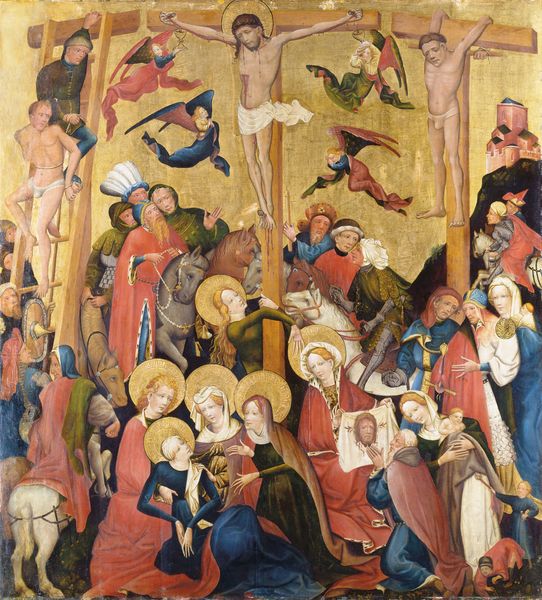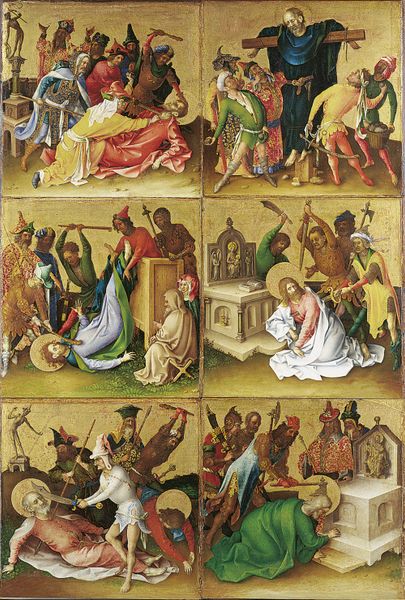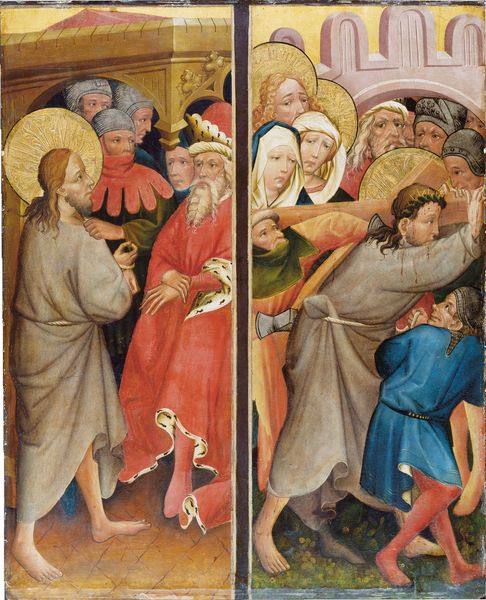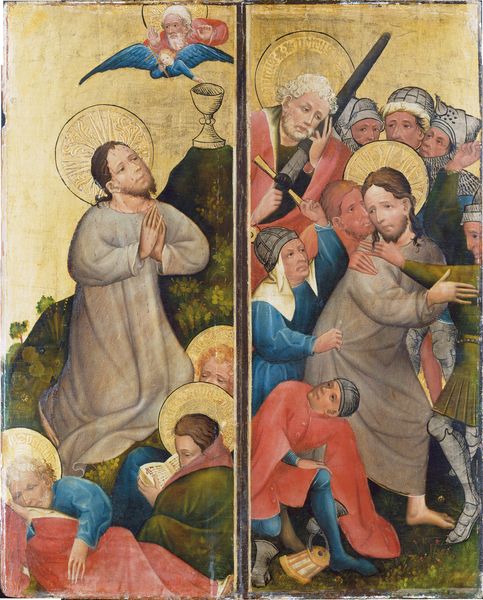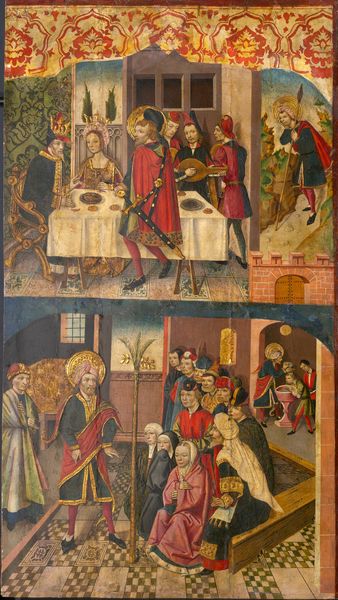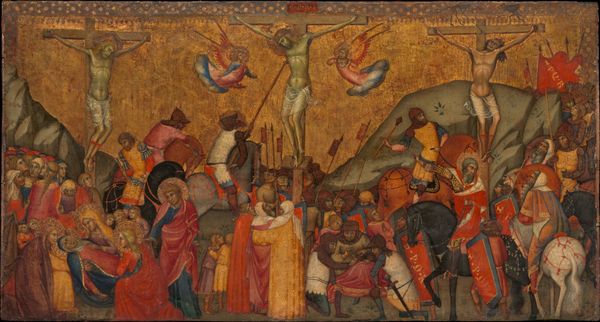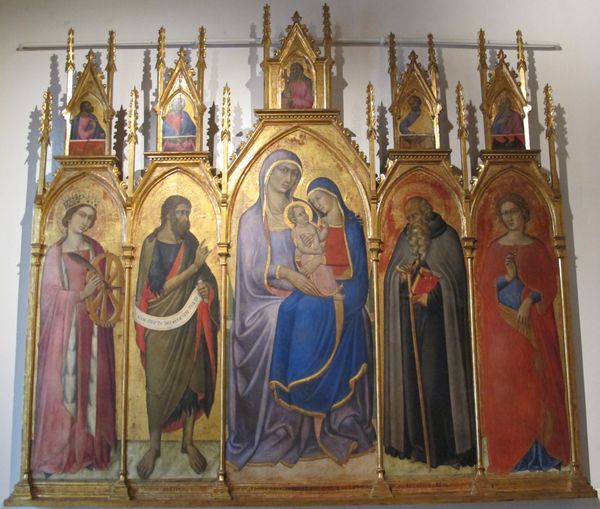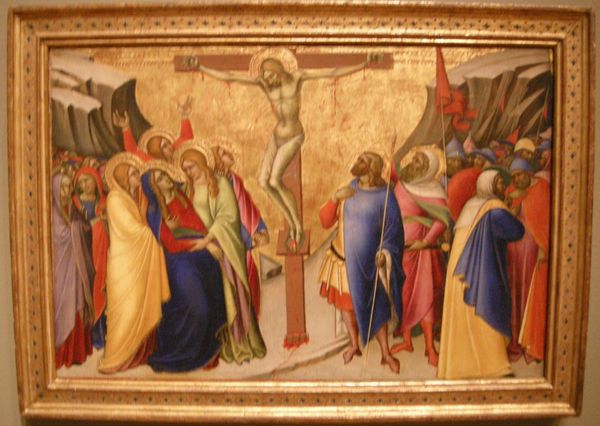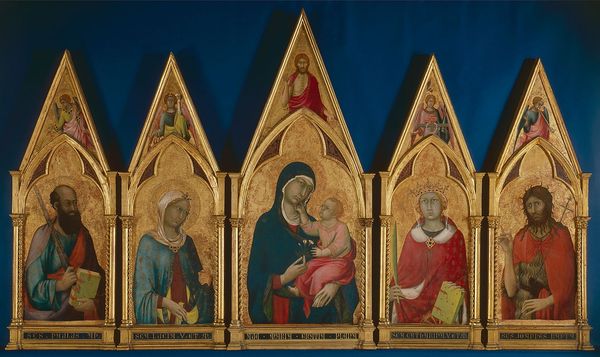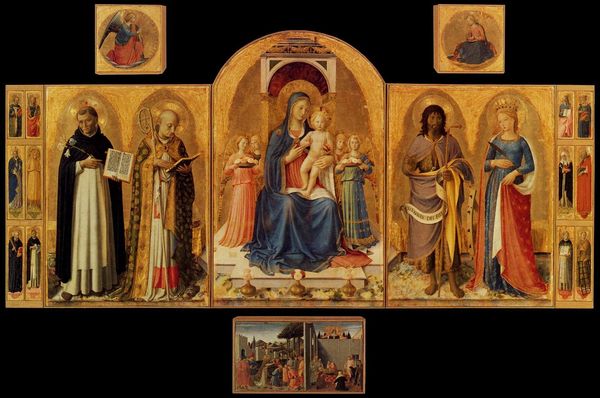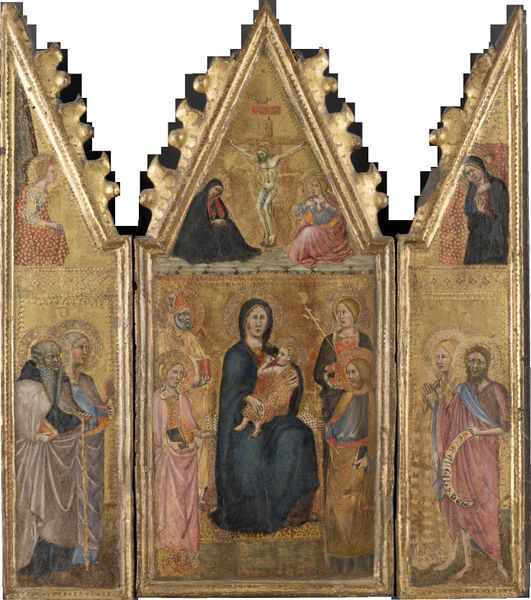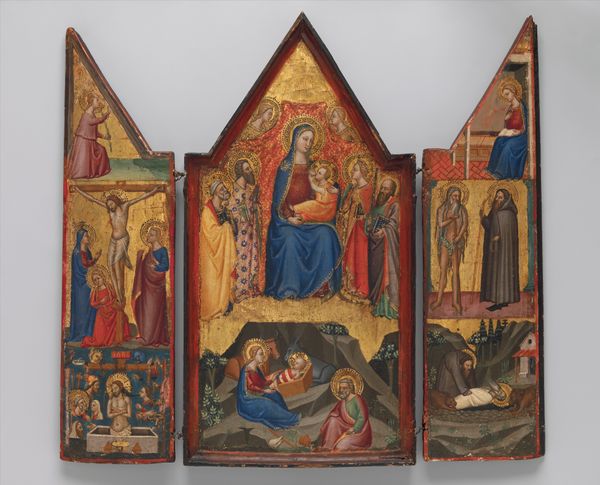
Crucifixion Altarpiece, so-called St. Peter’s Church Altarpiece c. 1420
0:00
0:00
tempera, painting, fresco
#
portrait
#
medieval
#
tempera
#
painting
#
fresco
#
jesus-christ
#
group-portraits
#
12_15th-century
#
crucifixion
#
history-painting
#
international-gothic
Copyright: permanent loan
Editor: We're looking at the "Crucifixion Altarpiece," sometimes called the St. Peter’s Church Altarpiece, made around 1420. It's a tempera painting, and the museum attributes it to an anonymous artist. It feels incredibly dramatic and overwhelming with all the figures packed into each panel. What story do you see unfolding here, beyond the obvious crucifixion in the central panel? Curator: For me, this altarpiece sings a poignant melody of human experience. There’s such raw emotion poured into every brushstroke; it’s almost as if the artist weren't merely depicting the crucifixion, but trying to *feel* it. Note the faces in the crowd. Can you see their individual expressions of grief and turmoil, even after all these centuries? It’s more than a religious scene; it’s a study of humanity under duress. What kind of life experiences do you suppose these people bring to bear when viewing something so charged? Editor: That's a beautiful way of putting it, like a melody. I guess I was so focused on the drama I hadn’t considered the quieter individual moments. I see now the figures you mean, like the two embracing women or the hooded figure who is grieving. Curator: Exactly! And think of the artist’s skill in conveying these complex emotions using what, to our modern eyes, seems like a limited visual vocabulary. I almost imagine this anonymous master whispering, “Look closer, feel deeper,” inviting us to empathize with those present at that pivotal moment in history. A true Renaissance man before his time? Perhaps not, but the humanity conveyed *is* timeless. And the gold ground really forces you to focus, right? What if the figures inhabited a verdant and lively space – how different would the viewing experience be? Editor: Definitely. The gold makes it feel very solemn and otherworldly. I see now how the artist uses this backdrop as another tool for expression. I initially thought it flattened the images. Curator: It certainly contributes to a decorative quality, doesn’t it? So what has struck *you* most deeply about this work? Editor: Definitely the emotional depth. It makes you think about the event as if you are a part of it. Thanks, I appreciate that perspective.
Comments
Join the conversation
Join millions of artists and users on Artera today and experience the ultimate creative platform.
